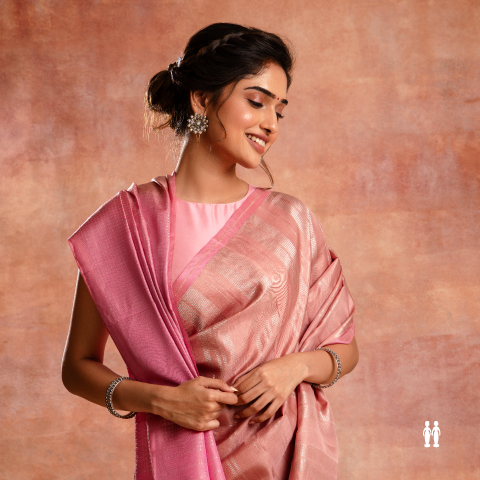The craft of embroiders is no less than the art of poets and painters who have defined cultures and civilizations.
This week’s blog is an ode to the shimmering embroidery of Awadh, which is now a part of Uttar Pradesh, but was established as Faizabad in 1722 AD under the Nawabs.
Known as Kamdani or Fardi ka kaam, this shimmering embroidery was a part of the rich Lucknowi culture and tradition. The metal wire embroidery was done with drawn flattened metal threads, called Badla.

This metal embroidery technique was brought to India by the Mughals in the 16th century. The small metal dots called fardi are found in textiles of Turkey, Egypt and Iran. During olden times, precious metals like gold and silver were used to embroider the garments made for the royalty. Today, for the mass market, it is substituted by cheaper metals like steel. The base fabric used for badla embroidery is usually fine semi-transparent fabrics like net, voile, muslin, georgette and crepe.
The metal embroidery is majorly categorised on the basis of two styles of stitches - Kamdani, the longer stitch and Fardi ka kaam, the shorter stitch.
Kamdani
Kamdani is made by long stitches of the metallic wire and the flat badla is treated like an embroidery thread which goes in and out of the fabric to make the stitches.

Fardi ka kaam
In Fardi, the badla looks like shimmery stars. This embroidery technique embellishes the textile with a short length of badla by leaving small metal dots on the fabric.

The badla metalwork embroidery is done on a taut, stretched frame. This technique when done with tiny spangled wire dots, is also referred to as Muqaish. Usually, this work is integrated with the local traditional textiles of Bandhani and Chikankari to enhance and embellish sarees, odhnis and dupattas.
Let's take look at this laborious design process:
1). Tracing and transfer of designs
A. The design to be done on the fabric is type-faced from a tracing sheet, usually a butter paper.
B. The designs are perforated with pins on the butter paper or tracing sheet. This sheet is then kept over the fabric. And through a process called putai, the colour is smeared over the holes in the butter paper leaving impressions of the dye on the fabric.
2). The metal embellishment and finishing
A. Once the badla work is done on the designs on the fabric, a finishing technique called Ghutai is done to smoothen both the ends of the metal wire.
B. The metal embroidery is smoothened with conch shells, with the main purpose being not to poke the wearers with the ends of the metal wire.
3). Washing and starching
A. The finished fabric is washed to remove the elements of dye used while tracing
B. The final product is then starched and ironed.
The Muqaish work of Lucknow has distinct floral and jali mesh motifs in its work, true to its architectural heritage. Lucknow has always stood apart for its amazing Nawabi culture - be it the polished dialect, rich culinary delicacies, or the fine art of embellishments and ornamentation. Muqaish embroidery stands testimony to the wonderful craftsmanship of this region.






